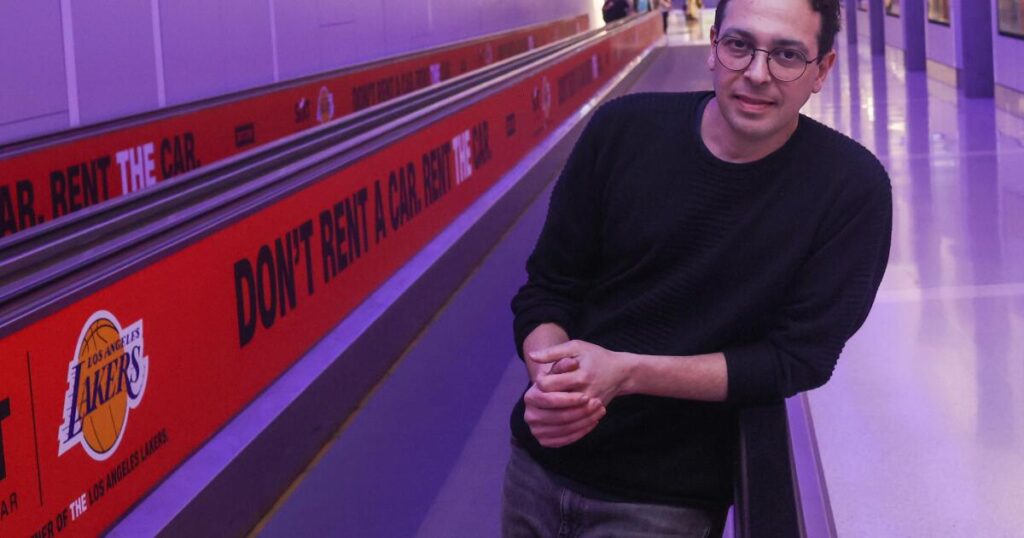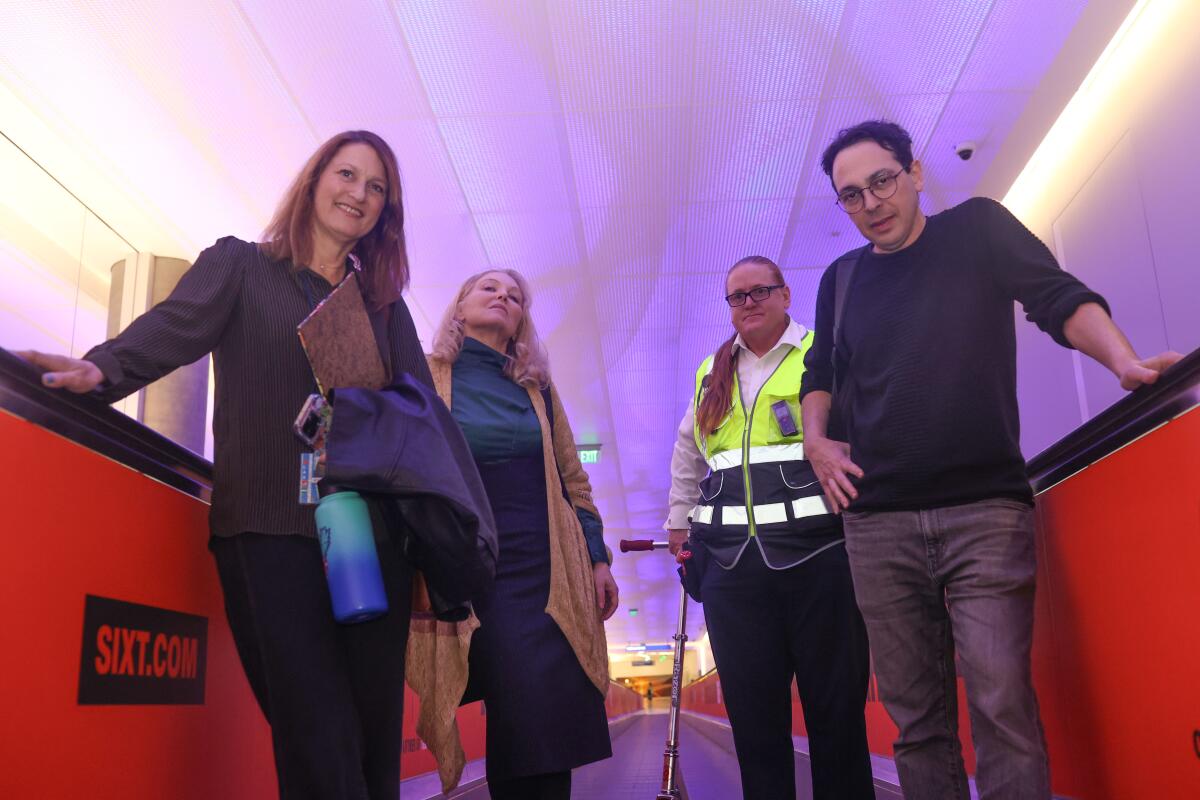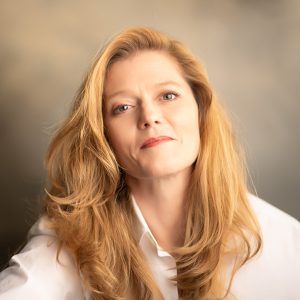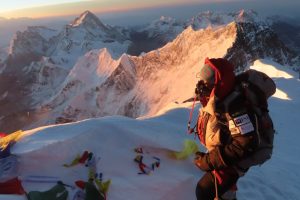Travel is chaos. Can a new ambient music program at LAX help?

The maelstrom of travel through LAX calms down when you walk into the Orchestrina. At the start of a 1,000-foot-long hallway connecting the Tom Bradley International terminal’s Great Hall to its west gates, the light dims to a soothing cerulean. Swells of ambient music rise to meet passengers as the moving sidewalk whisks them through the terminal.
Along the way, the music shifts between 30 compositions written in a single key (C major), from well-known artists like Devo’s Mark Mothersbaugh, local heroes John Carroll Kirby and Dwight Trible of Leimert Park’s World Stage, and avant-garde L.A. composers like Molly Lewis, Celia Hollander and Sam Gendel.
At the end, an exhibition of works by Helen Pashgian, Larry Bell and more artists from the Light and Space movement invites travelers to ponder L.A.’s history of sculpture using jet-age industrial materials.
“You can see it’s engaging when they press their faces on the glass,” laughed Tim McGowan, art manager for LAX, as he showed off the sculptures and the sound installation to passing travelers last week.
The Orchestrina, a public art installation from the staple L.A. radio and event collective Dublab, is part of a new three-year contract for the station to program live music and sound art at LAX. It’s a subtle introduction to L.A.’s experimental music and art scenes, all before you hit the customs gate.
As passengers are on edge over the many things going wrong in the skies these days, from blown-out door plugs in midair to mushroom-tripping pilots, the Orchestrina is a brief moment of tasteful, sensory peace.
“For decades now, Dublab has been doing programming in unconventional places,” said Alejandro Cohen, executive director of Dublab. “Maybe the final frontier of this is the airport.”
It’s one thing to curate a blissed-out showcase of ambient music under the sylvan canopy at Descanso Gardens (where Dublab recently did a mini-festival where fans were encouraged to nap). It’s quite another to pull it off at a place that is shorthand for how deeply your loved ones will sacrifice in order to pick you up.
In 2022, more than 65 million people passed through LAX, many of them en route to the thousands of shows and festivals that make L.A. the world’s live-music capital. Dublab got the call from LAX Art Program Director Sarah Cifarelli to build Orchestrina back in 2019; after pandemic delays and tweaks to the tech that began in 2021, Orchestrina is formally up and running to the public and will stay for at least three years.
People walk by the art exhibit centered on L.A.’s Light and Space movement at LAX.
(Michael Blackshire / Los Angeles Times)
The exhibit likely has the most underground intrigue of any airport art that isn’t hiding a UFO bunker (as the Denver’s airport’s “Blucifer” horse is rumored to). To build it, Dublab’s Eli Welbourne worked with the music-tech firm Lux Aeterna to splice those 30 original snippets into an ever-evolving, spatially separated single work that draws on composer Terry Riley’s opus “In C” and Brian Eno’s “Music for Airports” as mood boards. The music shifts and follows you down the walkway, and it feels like you’re being pulled through a tracking shot of a near-future sci-fi film.
“That’s absolutely the intent, to offer like a brief respite from the hectic feeling,” Welbourne said. “There’s a really interesting effect when you enter the installation, coming down this long set of stairs and entering this blue light that completely surrounds you with music and field recordings where you can hear birds and wind passing through grass.”
“I think we’re able to help alleviate those moments of stress,” said Cifarelli, “and really create a passenger experience that’s more humane and enjoyable.”
There are many events planned for the three years to come, as Dublab tries to make one of the most dreaded locations in the county somewhere you might actually linger and listen. On Wednesday, the station brought two experimental electronic acts, Ana Roxanne and DJ Python, to perform ambient music as Natural Wonder Beauty Concept for a new series for ticketed passengers in LAX’s Terminal 1.
“I believe in the power of public art to be able to provide this kind of work to a broad, evolving audience that’s always going through,” Welbourne said.
While many passengers likely would appreciate a genuine rail connection to LAX alongside a tasteful ambient music program, public art is one piece of an evolving conversation about who benefits from transit infrastructure in L.A. Metro’s use of locally reflective public art on the K line and new nonpolice ambassadors to tend to riders in need is one attempt to make getting around L.A. more enjoyable for everyone.

LAX Art Program Director Sarah Cifarelli, left, guest curator Laura Whitcomb, LAX art programmer Tim McGowan and Dublab Executive Director Alejandro Cohen on the moving walkway at LAX.
(Michael Blackshire / Los Angeles Times)
“It’s got to be part of the equation when we’re planning transportation projects,” Cifarelli said. “We want things that reflect our city, and I think we’ve got to bake the arts programming in as part of that. At the end of the day, we’re all just human beings using these public spaces.”
For Cohen, who has produced concerts and broadcast shows to Angelenos for decades, the LAX contract will be his biggest audience to date by an order of magnitude, even if many of those passengers will barely notice it.
That’s part of the point, though, to show off the city for anyone looking closely, and make it more gentle for anyone passing through.
“These are the things that you kind of live for, you work for, being part of the heartbeat of the city,” Cohen said. “It’s another step towards being embedded within the city, being part of it in conscious or unconscious ways.”





